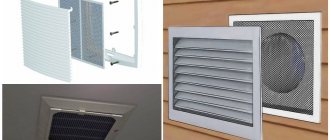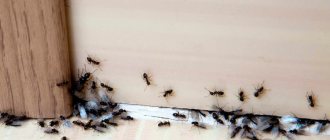Most owners of country houses encounter rodents sooner or later, but housing built using frame technology is especially vulnerable. The company where I worked knew about this feature of frame frames. As protection, a proven product was used - a rodent net; in a frame house it is successfully used at the stage of foundation construction. I want to tell you how to choose and use a net correctly, and what other methods of rodent control have been found effective.
Source insectcop.net
Features of frame structures
Frame construction in the private sector is widespread throughout the world; There are many reasons for its popularity. This includes a low cost per square meter, speed of construction, and high performance characteristics (frameworks are built in the northern regions of Canada, on the Scandinavian Peninsula).
In addition to a lightweight foundation, the technology includes a ventilated facade, and such a frame constructor requires special attention to the joints; It is also important to avoid subsidence of the filler. If this is not done, gaps will remain in the wall structure, drafts will begin to circulate in the house, thermal efficiency will decrease and the building will no longer retain heat.
Even if it is possible to avoid gaps at the junction of structural elements and sheathing, ventilation gaps remain. They are installed between the cladding and the internal enclosing structure so that atmospheric moisture is removed naturally, with air circulation. Floors, as a rule, are installed on joists, and between them a heat-insulating layer of tile or roll material is also laid.
Source zhk-akvapolis.rf
No matter how sad it may sound, this design is most vulnerable to various pests. Residents of Canada and the United States have the most problems with termites. Termites do not live in the cold Russian climate. But in the structure of frame houses there are many materials that cannot resist the sharp incisors of mice and rats, and ventilation and random gaps create an environment favorable for their life and reproduction.
Mice feel comfortable in a frame house, calmly penetrate inside the building, gnaw new holes and passages, and make nests made of insulation. And, if the designers and builders did not take care of protecting the structure, after a few years the cozy, warm frame becomes unsuitable for life.
First of all, the foundation, base and floor are attacked by rodents. A competent architect is well aware of the problem and is sure to take it into account in the project.
The most dangerous areas are protected during the construction stage, and insulation for filling the panels is also carefully selected.
Source ridofmice.net
Which houses are at risk?
For rodents, it doesn’t matter what material the house is built from: they will happily live in a house made of timber (that is, in my house), or in a frame house, or in a stone house (with insulation). The favorite insulation of rodents is polystyrene foam: they gnaw passages in this material, build nests and then live peacefully with considerable pleasure. The glass mouse is also not neglected. But things are much better with ecowool: it is a loose, crumbly material in which rodents get entangled, and which, as far as I know, people try to avoid.
Mice love styrofoam
Why do rodents seek human habitation?
The short answer to the question of why rodents appear in the house is because they can. In fact, the most durable frame materials are chipboard and lumber, and the teeth of mice are sharpened for working with wood. When rodents get into a space with insulation, their task becomes easier.
In the thickness of the insulation, pests easily create tunnels and nests, and it is very difficult to get rid of them at this stage. Sometimes owners resort to radical measures (including partial dismantling of walls), but this does not provide a 100% guarantee. The persistence of gray aggressors is explained by two reasons:
- Wild animals are in constant search of food, and in human housing there is always a supply of food.
- With the onset of autumn, weather conditions worsen; mice and rats seek shelter from the cold.
Mice and rats get into the house in different ways. A gap in a building structure or a slightly open door is enough for them, but there are other ways. For example, an animal can crawl along a communication pipe or climb up the siding into the attic. Therefore, the safety of the house should be taken care of at the design stage and then during construction.
Source pro-karkas.ru
Ultrasound sources
Modern methods include ultrasound generators, which repel rodents during operation. It is worth saying that such devices have a controversial reputation, since the Internet knows many stories about how rodents calmly walked next to a working ultrasound generator and did not pay any attention to it.
For the most part, this is due to low-quality ultrasonic generators that have flooded the domestic market. Therefore, if you still decide to buy such a device, be sure to choose a high-quality model from a brand with a good reputation.
Note! Ultrasonic generators affect not only rodents, but also pets. Therefore, these two methods do not combine well with each other.
Damage caused by rodents
A frame house and mice are incompatible concepts, even if you love wildlife. Close proximity to its numerous tailed representatives becomes a source of real problems:
- Irritant activity. Rodents are especially active at dusk and at night. They multiply quickly, find themselves swarming and squeaking under the floor and behind the walls, and are also accompanied by a specific smell.
- Mice actively chew not only wood and insulation, but also wiring, furniture and other property; spoil food.
- They are potentially carriers of infections dangerous to humans. Some of the diseases are transmitted through contaminated food (for example, cereals), others - through blood-sucking insects moving between rodents and humans.
- Animals can pose a danger to pets and sometimes to small children.
There are different ways to protect yourself from rodents, but the simplest tool (if used in a timely manner) is a metal mesh.
Source ecoteploiso.ru
Formidable enemies
House mice are the largest population of mammals. They reach a length of 9.5 cm and a weight of 30 g. Thanks to the property of synanthropy - coexistence with humans - they are perfectly adapted to his lifestyle and housing. They live everywhere except in the Far North and Antarctica.
A little mouse can run 5 km in search of suitable housing. She is especially active at the end of summer and autumn, as she really does not like cold weather. It digs holes in the ground to a depth of 60 cm. It moves along constant routes, leaving paths of dust and droppings, holding them together with urine. Its specific smell indicates the existence of a rodent in the room.
Mice live in families where there are several females per dominant male. The individual range around the nest is 900-1200 m². Rodents try not to leave the area.
House mice run fast, climb, jump, and swim well.
They breed all year round. One female can bring up to 120 cubs per year.
The centuries-old proximity of mice and humans is an indisputable fact. But the fact that 80% of the rodent genome is the same as the human genome still remains a mystery. This feature is used in science to study diseases and methods of treating them. The Methuselah Foundation, which deals with the problem of aging, awarded a prize in 2005 for the five-year longevity record of a laboratory mouse. A monument was erected to her in Novosibirsk Akademgorodok.
The house mouse's closest "companions" are gray and black synanthropic rats. Their lifestyle is similar to that of mice, but the damage caused to the farm is many times greater. Rodents, without any harm to their own health, damage lead and aluminum pipes and live cables, creating emergency situations in transport and communication networks.
A feature of a large rodent is the ability to adapt to poisons and the ability to think abstractly. Thanks to this, the pest population is constantly growing, despite active control - deratization.
Rodent mesh: which one is suitable?
A metal mesh is used as a protective net against mice in a frame house. To reliably block the path of animals, it must be fine-mesh; then it will reliably block possible passages, but will not affect the ventilation of the facade in any way. The following types of mesh are effective:
- Welded. It is obtained by welding perpendicularly located wires. Suitable material with a diameter of 1 mm, with a maximum cell size of 6 mm.
- Expanded metal (CPVS). Professional reinforcing mesh used in finishing works. The material is all-metal, made from steel sheets 0.5 mm thick by cutting and further stretching. Due to the peculiarities of the technology, cells measuring 5x5 mm are rhombic.
It is important that the mesh is galvanized; otherwise, the product will have low corrosion resistance and will only be suitable as temporary protection. It is best if a layer of polymer coating is applied on top of the galvanization.
Source prom.st
Do not use metal woven mesh. Unlike previous options, it is soft, the wire is not rigidly connected; under mechanical influence, the cells will change shape and become passable for mice. A woven mesh with a very fine mesh is also undesirable: the cells can become clogged with dirt, air will circulate poorly, and this is a problem for a frame structure.
Using a grid is beneficial for the following reasons:
- The material is sufficiently rigid and does not sag. Wire 0.5 mm thick will reliably protect against rats and mice.
- The mesh is light in weight, the frame structure will not be overloaded, and installation will be simple.
- The material has a budget price; the mesh is produced in rolls of different lengths.
Source setkamsk.ru
Welded and CPVC anti-rodent mesh for a frame house can be used in different ways. It is easier to bend welded mesh, cut it into sheets of the desired format, and give them a certain shape. To give the desired shape to the CPVS, some effort will be required. Therefore, it is advantageous to use it to cover complex joints (for example, fillet welds).
Let's sum it up
You can get rid of mice; I managed to get them out of my house using timber. There are many ways, and many of them are very effective. But all methods are associated with unnecessary problems and discomfort, and therefore I advise you not to repeat my mistake and take into account the factor of the arrival of rodents at the construction stage.
I hope my short article was understandable and useful to you. If you have something to say (for example, share your method of removing mice), then be sure to write about it in the comments!
How to apply the grid correctly
Protecting a frame house from rodents using a mesh can be done in several ways. Galvanized material is mounted on the following structural elements:
- Along the outer wall surface of the foundation and plinth. Vertical installation closes all technological openings (for example, vents); must be carried out with penetration into the ground, at least 0.8-1 m.
- Under the finishing coating of the facade (on the outer corners, at the junction of frame walls).
- Along the perimeter of the house (along the air gap of the ventilation facade).
- In the subfloor (under thermal insulation).
- Other technological openings, for example, a chimney.
Source museumpests.net
Advantages and disadvantages
A high-quality frame house should be:
- reliable, able to withstand any load;
- resistant to earthquakes and other natural disasters;
- environmentally friendly, not harmful to the health of those who live in it;
- comfortable in temperature (cool in summer, warm in winter).
The undeniable advantages include the fact that it is built quite quickly
, that is, its cost is reduced and the owners can move into their home earlier. Frame-panel houses can be used in places with temperatures from -60 to +60 °C. They are durable - they can be used for about 100 years. Such houses are not afraid of hurricane winds, earthquakes, or snowfalls.
All costs for the construction of the building are easily recouped - the panels include insulation. This allows you to save on heating the room in the cold season.
Also, frame houses weigh little, which reduces the load on the foundation and soil - this also contributes to the durability of the structure. Such a building can be erected at any time of the year.
, because there are no so-called “wet” construction processes. Smooth surfaces also make it possible to significantly simplify finishing and bring various architectural ideas of the customer to life.
This little flaw
Frame houses would be ideal if not for one small but very unpleasant drawback - rodents
. These small animals dig holes for themselves in glass wool and expanded clay, and prevent the owners of the house from sleeping peacefully. Mice can live peacefully within the walls of a frame building, and the owners will rack their brains for a long time about how to drive away the uninvited guests.
The threat of mouse infestation is especially relevant for buildings in the construction of which cheap polystyrene foam was used as insulation.
.
Other control methods
The most effective preventive measures to protect against mice in a frame house. These include the following activities:
- The use of a monolithic reinforced concrete foundation in combination with fine mesh on the facade.
- Subfloor made of expanded clay on the ground with screed.
- Using insulation in the walls that is unattractive to rodents. Such materials are considered ecowool, glass wool, slab or granulated foam glass.
If mice or rats have already entered the house, you can try the folk method: the animals cannot stand the smell of burnt wool. Therefore, you can try to drive them out of the house if you set fire to a piece of wool in a metal container and leave it in the basement. The smoke will spread throughout all the passages and drive the pests away.
Source karkasblog.ru
About protecting a frame house from rodents in the following video:
Ultrasonic generators
What to do if the house has already been built, and despite all the preventive actions, it is still attacked by rodents?
There are many proven ways to eliminate mice, among which a very effective and environmentally friendly method is the use of ultrasonic repellers. These are devices whose operating principle lies in the emission of sound waves that are not audible to the human ear. At the same time, rodents clearly hear an unpleasant sound, which forces them to leave the area of influence of the device. Such devices are effective not only against mice - installing an ultrasonic repeller can also rid an area of larger rodents - rats, moles and other pests. Having a cat in the house, or better yet several, can help prevent the appearance of small pests. Everyone knows with what pleasure hunter cats exterminate rodents. Indeed, even the smell of a predator repels rodents. But this doesn't always work. You may come across a cat that will live in the same territory with mice in complete harmony, without causing them any harm. Natural enemies of small rodents are weasels and stoats. Several of these domesticated animals can quickly clear a house of mice.
Briefly about the main thing
Metal mesh has been recognized as an effective mechanical method of rodent control in a frame house. With its help, during the construction phase, cracks and technological openings in the structure, which serve as the main entrance for mice and rats, are protected.
Two types of mesh are suitable for use: welded and expanded metal; It is important that the material is galvanized. With its help, first of all, they protect the foundation, plinth and floor, then the joints and technological holes of the frame structure.
Question
Write in the comments what you think - does it make sense to treat the frame parts with a solution of borax or lime, and sprinkle ground red pepper around the house (folk methods)?
We solve the problem in advance: expanded clay castle
A method that was already too late for me to use, but it might be useful to you. The bottom line is that thanks to the expanded clay lock, mice will not be able to enter the home through the floor. In this case, expanded clay should be included in the floor cake. This is how it - the pie - should look (from bottom to top, i.e. from the ground):
- expanded clay (layer at least 30 cm thick);
- PET film;
- OSB-3 (2 layers);
- another layer of expanded clay;
- OSB sheets impregnated with synthetic wax and boric acid.
In such a cake, expanded clay will serve as a mechanical obstacle, and boric acid will act as a chemical repellent (until it wears off).
Expanded clay will help in the fight against mice
Another effective option is to cover the gaps with galvanized steel strips . The floorboards are laid along joists, without thermal insulation material, and the cracks are closed with strips (their width should be approximately 10 cm), which are nailed to the floor. Insulation material and sheathing are already laid on top of this.
Expert opinion: Afanasyev E.V.
Chief editor of the Stroyday.ru project. Engineer.
Want to learn more about rodent management and effective ways to control them? Read my detailed article - “what insulation mice won’t chew”
Prices for expanded clay in bags
expanded clay in bags











